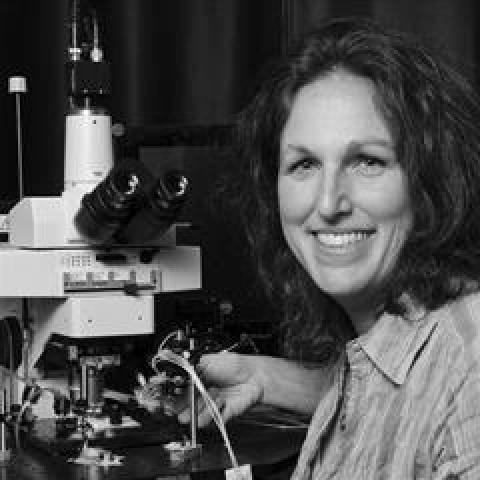Interdisciplinary Initiatives Program Round 3 – 2006
Miriam Goodman, Molecular and Cellular Physiology
Eric Darve, Mechanical Engineering
The sense of touch is an important, but neglected, part of how humans communicate. For example, long-term health and mental development in infants is greatly enhanced by extensive skin-to-skin contact just after birth. Touch-sensitive nerve cells in our skin are decorated with tiny ion channels that open when the skin is touched. These ion channels are part of a complex apparatus that is very poorly understood. Using a combination of cutting-edge techniques in a tiny roundworm, work by Principal Investigator Miriam Goodman (Asst. Professor of Molecular and Cellular Physiology, School of Medicine) and her colleagues has led to the discovery of proteins that make up the touch-sensitive ion channels in nerve cells. Amazingly, Goodman demonstrated that changing a single amino acid in one of these proteins (called MEC-4) causes the channels to remain open, leading to the eventual destruction of the cell. Working with Goodman, Principal Investigator Eric Darve (Asst. Professor of Mechanical Engineering, School of Engineering) will use state-of-the-art methods in bio-molecular modeling and computer science to develop high-resolution models of channel structure and function. By bringing together expertise in neurobiology, computer science and engineering disciplines, the investigators will generate new models of how touch opens these channels. What is learned from this study has the potential to enhance understanding not only of our sense of touch, but also of related nerve cells that monitor the function of internal organs and our muscles.



